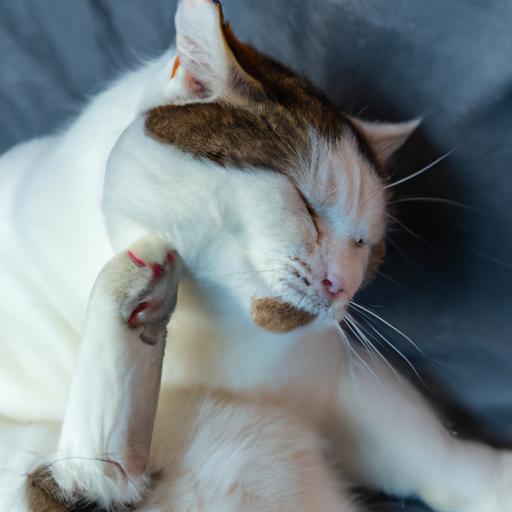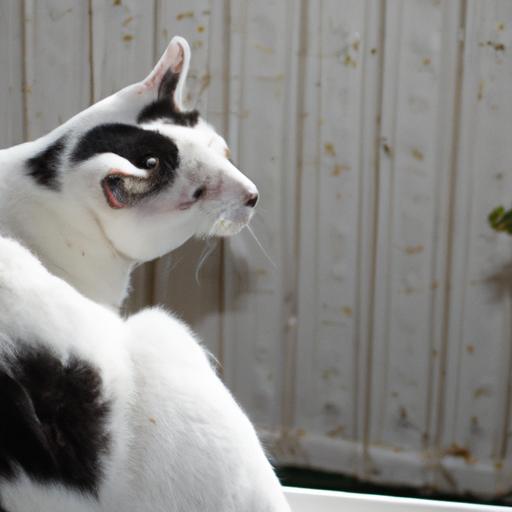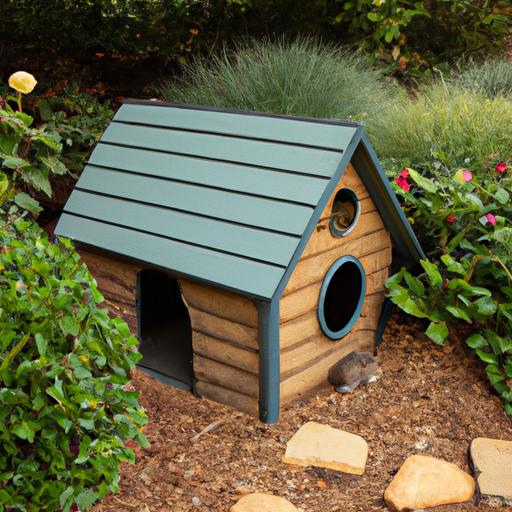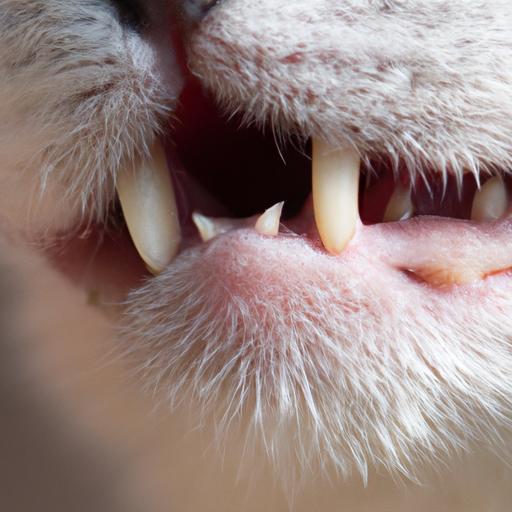Cats are known for their impeccable grooming habits, meticulously cleaning their fur to maintain its luster and cleanliness. However, have you ever noticed your feline friend excessively grooming after a flea treatment? This peculiar behavior can be quite perplexing for cat owners, leaving them concerned about their furry companion’s well-being. In this article, we will delve into the world of cat excessive grooming after flea treatment, unraveling its mysteries and shedding light on why it occurs.
Understanding the importance of this issue is crucial for cat owners like you. While grooming is a natural and essential part of a cat’s routine, excessive grooming can be indicative of an underlying problem. Flea treatments play a significant role in maintaining the health and well-being of our feline friends, but their aftermath can sometimes trigger unusual grooming behavior. By comprehending the reasons behind this excessive grooming, we can better address the issue and ensure our cats’ comfort and happiness.
The effects of flea treatment on cats can vary, and it’s essential to understand the potential side effects. Flea treatments, although effective in eliminating pesky parasites, can sometimes cause discomfort or irritation for our furry companions. This discomfort can manifest in the form of excessive grooming, as cats instinctively try to alleviate the sensation. By recognizing these effects, we can provide the necessary care and support to our cats during this period.
In the following sections, we will explore the signs and symptoms of excessive grooming in cats, delve into the causes of this behavior after flea treatment, and provide valuable insights on how to address and prevent it. Remember, understanding your cat’s needs and ensuring their well-being is the key to a harmonious and fulfilling relationship. So, let’s embark on this journey together and unravel the mysteries of cat excessive grooming after flea treatment.
Understanding Flea Treatment and its Effects on Cats
A. Explanation of Common Flea Treatments for Cats
When it comes to protecting our furry friends from fleas, various treatments are available in the market. These treatments aim to rid cats of these pesky parasites and prevent infestations. The most common flea treatments for cats include topical spot-on treatments, oral medications, flea collars, and shampoos.
Topical Spot-on Treatments: These treatments involve applying a liquid directly onto the cat’s skin, typically between the shoulder blades. The active ingredients in these treatments kill fleas upon contact and provide long-lasting protection.
Oral Medications: Oral flea medications are ingested by cats and work from within to eliminate fleas. These medications often come in the form of tablets or chewable treats and provide systemic protection against fleas.
Flea Collars: Flea collars are worn around the cat’s neck, and they release chemicals that repel and kill fleas. These collars provide continuous protection against fleas for an extended period.
Shampoos: Flea shampoos are specially formulated to kill fleas and remove them from the cat’s coat during bath time. While they provide immediate relief, their effects are usually temporary.
B. Discussion on Why Cats May Groom Excessively After Flea Treatment
Excessive grooming in cats after flea treatment can be attributed to several factors. Firstly, the active ingredients in flea treatments can sometimes cause skin irritation or discomfort, leading to increased grooming behavior. Cats may instinctively try to alleviate this discomfort by excessively licking or nibbling at their fur.
Moreover, the smell or residue of the flea treatment product on the cat’s coat may be another trigger for excessive grooming. Cats have a keen sense of smell, and they often engage in grooming to remove any foreign scents or substances on their fur. This behavior may intensify after flea treatment due to the presence of the treatment’s odor.
C. Possible Side Effects of Flea Treatments on Cats
While flea treatments are generally safe and effective, some cats may experience side effects. These side effects can vary depending on the type of treatment and the individual cat’s sensitivity. Common side effects may include skin irritation, redness, itchiness, hair loss, or dryness. It is crucial to monitor your cat closely after flea treatment and consult a veterinarian if you notice any concerning symptoms.
By understanding the various flea treatment options, the potential triggers for excessive grooming, and the possible side effects, we can better navigate this issue and ensure the well-being of our feline friends. In the next sections, we will delve deeper into the signs and causes of cat excessive grooming after flea treatment, providing you with valuable insights to address and prevent this behavior.
Signs and Symptoms of Excessive Grooming in Cats
As cat owners, it’s essential to be vigilant and recognize the signs of excessive grooming in our feline companions. While grooming is a normal behavior, excessive grooming can indicate an underlying issue. Let’s explore the various signs and symptoms to help us identify when our cats are engaging in excessive grooming after flea treatment.
A. Identifying Excessive Grooming Behavior in Cats
Identifying excessive grooming behavior can be a bit challenging, as cats naturally spend a significant amount of time grooming themselves. However, certain indicators can help us differentiate between normal grooming and excessive grooming. Pay attention if you notice your cat spending an unusually long time grooming, often at the expense of other activities such as playing or eating. Excessive grooming may also involve intense licking, biting, or scratching specific areas of their body.
B. Physical Signs of Excessive Grooming after Flea Treatment
Excessive grooming after flea treatment can leave physical evidence on your cat’s body. Look out for bald patches, thinning fur, or raw, red, or irritated skin. These physical signs may suggest that your cat is excessively grooming certain areas to relieve discomfort caused by the flea treatment. Additionally, you may find scabs, sores, or lesions on their skin, which can be a result of excessive scratching or biting.
C. Behavioral Changes Associated with Excessive Grooming
Excessive grooming can also lead to behavioral changes in cats. They may become more restless or agitated, constantly licking or biting themselves. Cats experiencing discomfort from excessive grooming may display signs of irritability or even aggression. Keep an eye out for changes in their overall demeanor, such as increased anxiety or avoidance of social interactions. These behavioral changes can be distressing for both you and your cat.
By being observant and recognizing these signs and symptoms, you can promptly address the issue and provide the necessary care for your cat. In the next section, we will delve into the potential causes of cat excessive grooming after flea treatment, unraveling the underlying factors contributing to this behavior.
Causes of Cat Excessive Grooming after Flea Treatment
A. Allergic Reactions to Flea Treatments
One of the primary causes of cat excessive grooming after flea treatment can be attributed to allergic reactions triggered by the treatment itself. While flea treatments are generally safe and effective, some cats may have hypersensitive reactions to certain ingredients. These allergic reactions can manifest as itching, redness, and discomfort, leading to excessive grooming as a self-soothing mechanism. It’s important to remember that each cat may react differently to flea treatments, so closely monitoring their behavior is crucial.
B. Psychological Stress and Anxiety as Triggers
Cats are highly sensitive creatures, and any changes in their environment or routine can induce stress and anxiety. The application of flea treatments, especially if it involves restraining or handling the cat, can contribute to their overall emotional well-being. Cats may associate the discomfort of flea treatments with negative experiences, leading to increased stress levels. In turn, this heightened anxiety can manifest as excessive grooming, as cats attempt to cope with their emotions. Creating a calm and soothing environment during and after flea treatments can help alleviate their stress and reduce excessive grooming behavior.
C. Other Underlying Health Conditions that May Contribute
In some cases, cat excessive grooming after flea treatment can be an indication of underlying health conditions. It’s essential to consider that excessive grooming may not be solely attributed to the flea treatment itself. Cats with pre-existing skin conditions, such as dermatitis or allergies, may experience exacerbated symptoms after flea treatment, leading to increased grooming. Additionally, hormonal imbalances or other medical issues can also contribute to this behavior. Consulting a veterinarian to rule out any underlying health concerns is crucial in managing cat excessive grooming after flea treatment.
Understanding the causes behind cat excessive grooming after flea treatment allows us to address the root of the issue effectively. By recognizing potential allergic reactions, reducing stress and anxiety, and considering other underlying health conditions, we can provide our feline companions with the care they need and minimize their discomfort. Let’s explore practical strategies and solutions in the upcoming sections to help our cats overcome this peculiar behavior.
How to Address Cat Excessive Grooming after Flea Treatment
A. Consulting a Veterinarian for Proper Diagnosis and Advice
When dealing with your cat’s excessive grooming after flea treatment, it is essential to seek professional guidance. Consulting a veterinarian will ensure a proper diagnosis and tailored advice based on your cat’s specific needs. Veterinarians possess the expertise and knowledge to identify any underlying health issues or allergies that may be causing the excessive grooming behavior.
During your visit, the veterinarian will conduct a thorough examination of your cat, considering factors such as their medical history, flea treatment used, and any other symptoms present. This comprehensive evaluation will help determine if there are any underlying medical conditions contributing to the excessive grooming. In some cases, additional tests or allergy screenings may be necessary to provide a definitive diagnosis.
B. Tips for Managing and Reducing Excessive Grooming Behavior
While consulting a veterinarian is crucial, there are also practical steps you can take at home to manage and reduce your cat’s excessive grooming behavior. Here are some tips to help you navigate this situation:
-
Provide Distractions: Engage your cat in interactive play sessions or provide stimulating toys to divert their attention from excessive grooming. Mental and physical stimulation can help alleviate stress and redirect their behavior.
-
Create a Calming Environment: Establish a peaceful and stress-free environment for your cat. Provide comfortable hiding spots, vertical spaces, and soothing music to create a sense of security and relaxation.
-
Regular Grooming: Maintain a regular grooming routine to keep your cat’s coat clean and healthy. Brushing your cat’s fur not only helps remove loose hairs but also promotes bonding and reduces the need for excessive self-grooming.
-
Address Underlying Stress: Identify and address any sources of stress in your cat’s environment. This may include introducing pheromone diffusers, implementing a consistent daily routine, or providing safe spaces where your cat can retreat.
C. Alternative Flea Treatment Options for Cats with Sensitivity
If your cat exhibits severe sensitivity to traditional flea treatments, it may be necessary to explore alternative options. Consult with your veterinarian to discuss alternative flea treatment methods that are gentle on your cat’s skin and minimize the risk of triggering excessive grooming behavior. Natural or holistic flea treatments may be worth considering, as they often use milder ingredients that are less likely to cause irritation or discomfort.
Remember, every cat is unique, and what works for one may not work for another. By consulting a veterinarian and implementing these tips, you can effectively address and manage your cat’s excessive grooming after flea treatment, ensuring their well-being and contentment.
Conclusion
In conclusion, understanding the phenomenon of cat excessive grooming after flea treatment is vital for cat owners to provide the best care for their feline companions. This peculiar behavior can be a result of various factors, including allergic reactions, psychological stress, and underlying health conditions. By recognizing the signs and symptoms of excessive grooming and taking appropriate measures, we can ensure our cats’ well-being and alleviate their discomfort.
When faced with this issue, it is crucial to consult a veterinarian for proper diagnosis and advice. They can provide valuable insights into the underlying causes and offer guidance on managing and reducing excessive grooming behavior. Additionally, exploring alternative flea treatment options for cats with sensitivity can help prevent future episodes of excessive grooming.
Prevention and long-term care are also essential for maintaining a healthy coat and minimizing the likelihood of excessive grooming after flea treatment. Regular grooming techniques, such as brushing and bathing, can help keep your cat’s fur clean and free from fleas. Monitoring your cat’s behavior and addressing any recurring issues promptly can further contribute to their overall well-being.
Remember, as cat owners, our responsibility extends beyond providing basic needs. It is our duty to understand our cats’ behaviors and cater to their individual needs. By being attentive and proactive, we can ensure a happy and healthy life for our beloved feline friends.
So, the next time you notice your cat engaging in excessive grooming after flea treatment, don’t panic. Armed with the knowledge gained from this article, you can confidently address the issue, provide the necessary care, and foster a strong bond with your cat based on trust and understanding.



